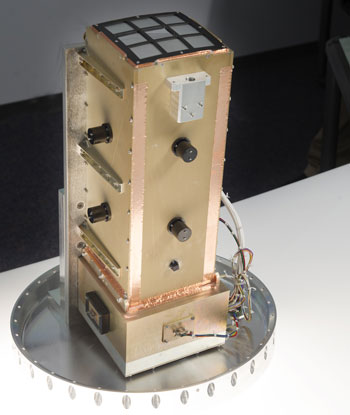 Three NASA scientists teamed up to develop and demonstrate NASA's first wide-field-of-view soft X-ray camera for studying "charge exchange," a poorly understood phenomenon that occurs when the solar wind collides with Earth's exosphere and neutral gas in interplanetary space.
Three NASA scientists teamed up to develop and demonstrate NASA's first wide-field-of-view soft X-ray camera for studying "charge exchange," a poorly understood phenomenon that occurs when the solar wind collides with Earth's exosphere and neutral gas in interplanetary space.
Feb 7th, 2013
Read more
 An automated supernova hunt is shedding new light on the death sequence of massive stars - specifically, the kind that self-destruct in Type IIn supernova explosions.
An automated supernova hunt is shedding new light on the death sequence of massive stars - specifically, the kind that self-destruct in Type IIn supernova explosions.
Feb 6th, 2013
Read more
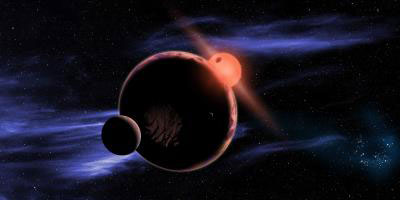 Using publicly available data from NASA's Kepler space telescope, astronomers at the Harvard-Smithsonian Center for Astrophysics (CfA) have found that six percent of red dwarf stars have habitable, Earth-sized planets. Since red dwarfs are the most common stars in our galaxy, the closest Earth-like planet could be just 13 light-years away.
Using publicly available data from NASA's Kepler space telescope, astronomers at the Harvard-Smithsonian Center for Astrophysics (CfA) have found that six percent of red dwarf stars have habitable, Earth-sized planets. Since red dwarfs are the most common stars in our galaxy, the closest Earth-like planet could be just 13 light-years away.
Feb 6th, 2013
Read more
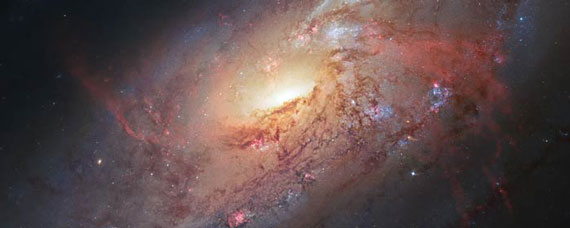 Despite its appearance, which looks much like countless other galaxies, Messier 106 hides a number of secrets. Thanks to this image, which combines data from Hubble with observations by amateur astronomers Robert Gendler and Jay GaBany, they are revealed as never before.
Despite its appearance, which looks much like countless other galaxies, Messier 106 hides a number of secrets. Thanks to this image, which combines data from Hubble with observations by amateur astronomers Robert Gendler and Jay GaBany, they are revealed as never before.
Feb 6th, 2013
Read more
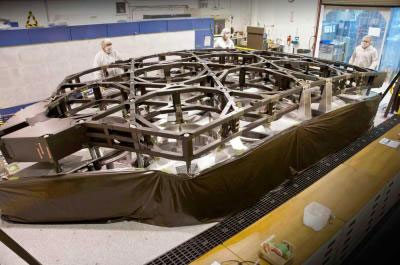 The James Webb Space Telescope marked another year of significant progress in 2012 as flight instrumentation was completed and delivered to NASA.
The James Webb Space Telescope marked another year of significant progress in 2012 as flight instrumentation was completed and delivered to NASA.
Feb 6th, 2013
Read more
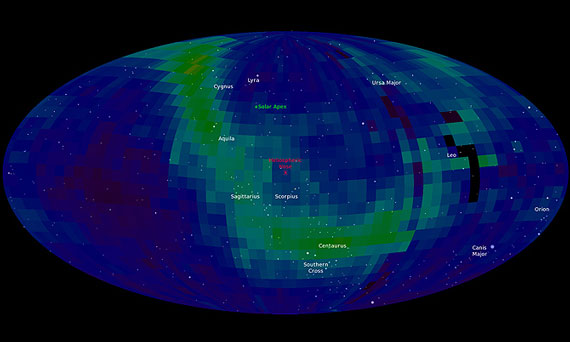 IBEX can map the boundary at the edge of our heliosphere in a way never before done. In 2009, IBEX saw something in that map that no one could explain: a vast ribbon dancing across the boundary that produced many more energetic neutral atoms than the surrounding areas.
IBEX can map the boundary at the edge of our heliosphere in a way never before done. In 2009, IBEX saw something in that map that no one could explain: a vast ribbon dancing across the boundary that produced many more energetic neutral atoms than the surrounding areas.
Feb 6th, 2013
Read more
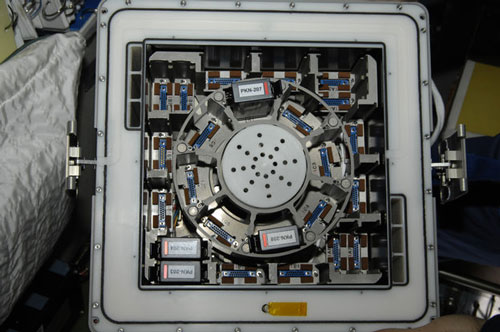 Living in space weakens astronauts' immune systems, researchers have discovered. The findings are providing clues on how to tackle diseases on Earth before symptoms appear.
Living in space weakens astronauts' immune systems, researchers have discovered. The findings are providing clues on how to tackle diseases on Earth before symptoms appear.
Feb 4th, 2013
Read more
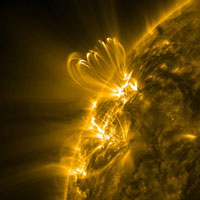 Researchers have used cutting-edge solar-imaging technology to observe the Sun's chromosphere - a region of the Sun's atmosphere sandwiched between its surface and outer layer - to an unprecedented level of detail.
Researchers have used cutting-edge solar-imaging technology to observe the Sun's chromosphere - a region of the Sun's atmosphere sandwiched between its surface and outer layer - to an unprecedented level of detail.
Feb 4th, 2013
Read more
NASA Television will provide live coverage of the departure of one Russian cargo spacecraft at the International Space Station and the launch and arrival of another.
Feb 4th, 2013
Read more
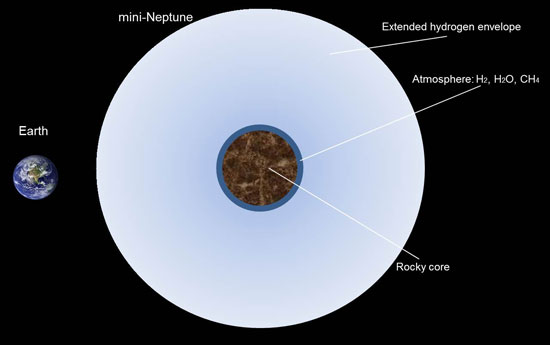 A new study suggests that super-Earths are actually surrounded by extended hydrogen-rich envelopes and that they are unlikely to ever become Earth-like. Rather than being super-Earths, these worlds are more like mini-Neptunes.
A new study suggests that super-Earths are actually surrounded by extended hydrogen-rich envelopes and that they are unlikely to ever become Earth-like. Rather than being super-Earths, these worlds are more like mini-Neptunes.
Feb 4th, 2013
Read more
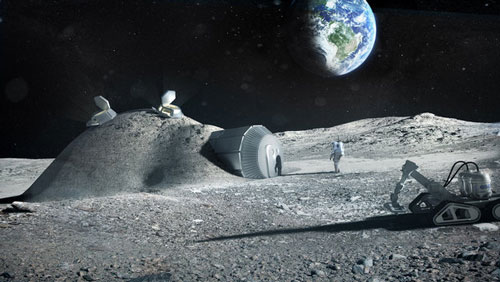 Setting up a lunar base could be made much simpler by using a 3D printer to build it from local materials. Industrial partners including renowned architects Foster + Partners have joined with ESA to test the feasibility of 3D printing using lunar soil.
Setting up a lunar base could be made much simpler by using a 3D printer to build it from local materials. Industrial partners including renowned architects Foster + Partners have joined with ESA to test the feasibility of 3D printing using lunar soil.
Feb 1st, 2013
Read more
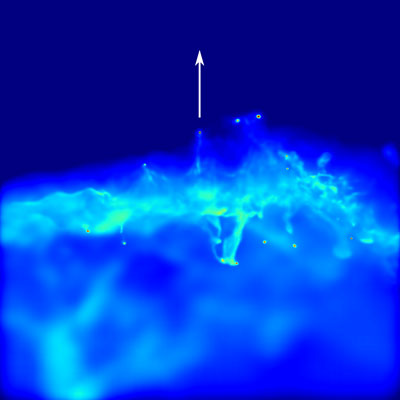 Astronomers of the international CLUES collaboration have identified "Cosmic Web Stripping" as a new way of explaining the famous missing dwarf problem: the lack of observed dwarf galaxies compared with that predicted by the theory of Cold Dark Matter and Dark Energy.
Astronomers of the international CLUES collaboration have identified "Cosmic Web Stripping" as a new way of explaining the famous missing dwarf problem: the lack of observed dwarf galaxies compared with that predicted by the theory of Cold Dark Matter and Dark Energy.
Feb 1st, 2013
Read more
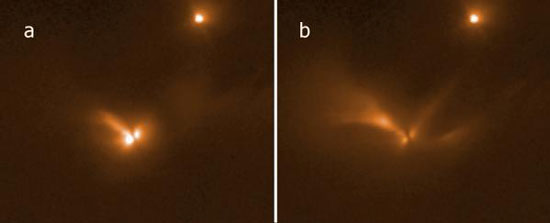 Years of monitoring its infrared with the Spitzer instrument reveal that it becomes 10 times brighter every 25.34 days, Gutermuth and colleagues say. This periodicity suggests that a companion to the central forming star is likely inhibiting the infall of gas and dust until its closest orbital approach, when matter eventually comes crashing down onto the protostellar "twins".
Years of monitoring its infrared with the Spitzer instrument reveal that it becomes 10 times brighter every 25.34 days, Gutermuth and colleagues say. This periodicity suggests that a companion to the central forming star is likely inhibiting the infall of gas and dust until its closest orbital approach, when matter eventually comes crashing down onto the protostellar "twins".
Jan 31st, 2013
Read more
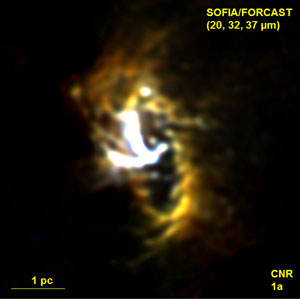 Cornell researchers have captured the sharpest mid-infrared images yet of a ring of gas and dust seven light-years wide orbiting the supermassive black hole at the center of the Milky Way.
Cornell researchers have captured the sharpest mid-infrared images yet of a ring of gas and dust seven light-years wide orbiting the supermassive black hole at the center of the Milky Way.
Jan 31st, 2013
Read more
A new study concludes that 70 per cent of the dust that is found between the Sun and Mars comes from comets, 22 per cent is from asteroids and around seven and a half per cent comes from outside the solar system, dust from interstellar space.
Jan 31st, 2013
Read more
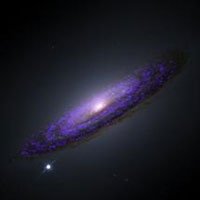 A new way of measuring the mass of supermassive black holes could revolutionise our understanding of how they form and help to shape galaxies.
A new way of measuring the mass of supermassive black holes could revolutionise our understanding of how they form and help to shape galaxies.
Jan 31st, 2013
Read more
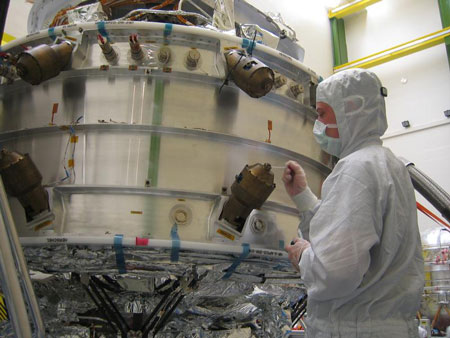 First public collection of spacecraft-associated bacteria founded by the European Space Agency.
First public collection of spacecraft-associated bacteria founded by the European Space Agency.
Jan 31st, 2013
Read more
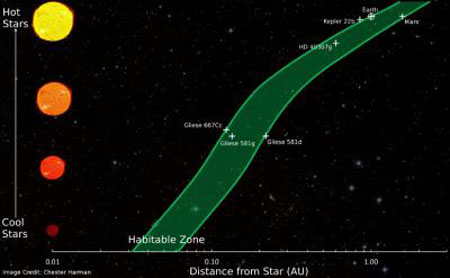 Using the latest data, the Penn State Department of Geosciences team has developed an updated model for determining whether discovered planets fall within a habitable zone.
Using the latest data, the Penn State Department of Geosciences team has developed an updated model for determining whether discovered planets fall within a habitable zone.
Jan 30th, 2013
Read more
 Three NASA scientists teamed up to develop and demonstrate NASA's first wide-field-of-view soft X-ray camera for studying "charge exchange," a poorly understood phenomenon that occurs when the solar wind collides with Earth's exosphere and neutral gas in interplanetary space.
Three NASA scientists teamed up to develop and demonstrate NASA's first wide-field-of-view soft X-ray camera for studying "charge exchange," a poorly understood phenomenon that occurs when the solar wind collides with Earth's exosphere and neutral gas in interplanetary space.
 Subscribe to our Space Exploration News feed
Subscribe to our Space Exploration News feed













